Bachelor exchange in Buenos Aires
MALBA (Museo de Arte Latinoamericano de Buenos Aires) is the museum of modern Latin-American art. It is the most visited museum in Buenos Aires and renowned throughout Latin-America as one of the best.
While normally visiting a museum wouldn’t be one of the first things I would do in a new country, going to MALBA together with Thomas and Julia turned out to be a perfect idea for a relaxed Saturday afternoon.
Starting in the early 20th century, many Latin-American artists traveled to Europe, where they came into contact with avant-garde movements. They were active participants in major exhibitions and debates in cities like Barcelona and Berlin. Their works stressed the autonomy of art and eschewed painting and sculpture as means of representing reality. In the twenties, many Latin-American artists returned to their countries of origin to become major players on local art scenes entangled in the battle between the traditional and the new.
Jan Ko
11 chapters
15 Apr 2020
Aplauso para el asador
July 25, 2015
|
Buenos Aires
MALBA (Museo de Arte Latinoamericano de Buenos Aires) is the museum of modern Latin-American art. It is the most visited museum in Buenos Aires and renowned throughout Latin-America as one of the best.
While normally visiting a museum wouldn’t be one of the first things I would do in a new country, going to MALBA together with Thomas and Julia turned out to be a perfect idea for a relaxed Saturday afternoon.
Starting in the early 20th century, many Latin-American artists traveled to Europe, where they came into contact with avant-garde movements. They were active participants in major exhibitions and debates in cities like Barcelona and Berlin. Their works stressed the autonomy of art and eschewed painting and sculpture as means of representing reality. In the twenties, many Latin-American artists returned to their countries of origin to become major players on local art scenes entangled in the battle between the traditional and the new.
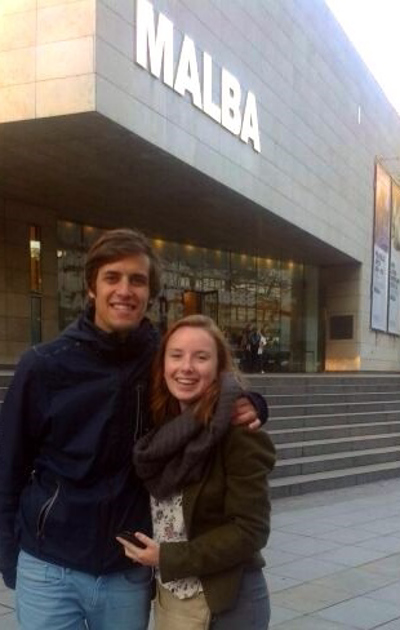
One of these artists was Mexican self-portrait artist Frida Kahlo. Her painting ‘Autoretrato con mono y loro’ is part of the permanent collection of MALBA. To be honest, I was not impressed by the painting itself, but it was interesting to learn about its background. Like all paintings in the museum, it gave us a glimpse into the economic, political and social transformations that emerged throughout Latin-America.
On Sunday we continued our weekend full of sightseeing at the Feria de San Telmo, which is one of the most notable and popular events in Buenos Aires. It is a fair with unique artisans and antiques which takes place every Sunday. As many others, we strolled down the cobblestone streets, watching tango and eating delicious food: choripan.
We followed the smoke signals and barbeque smells to escape the market and entered into a parking garage. Apparently, on Sundays this parking garage is transformed into an asado haven. In Argentina, asado is a term used both for a range of barbecue techniques and the social event of attending a barbecue. We made our way to the ticket booth and payed for our choripan, which is creatively named from the words ‘chorizo’ (sausage) and ‘pan’, bread.
From the ticket booth we moved to the long waiting line. After receiving our choripan in a paper towel, we covered it with chimichurri and criolla. Chimichurri is the traditional addition to grilled meat and contains vinegar, oil, garlic and parsley. Criolla also goes with meat but contains peppers, onions, vinegar and oil. We loaded it up sufficiently enough to have the sauces dripping off. Luckily the wait and the mess we made were more than worth it. Aplauso para el asador!
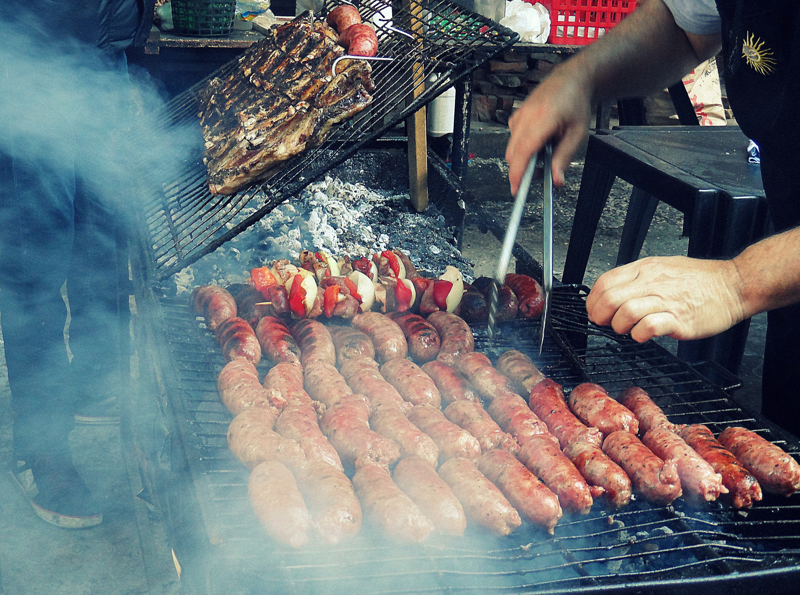
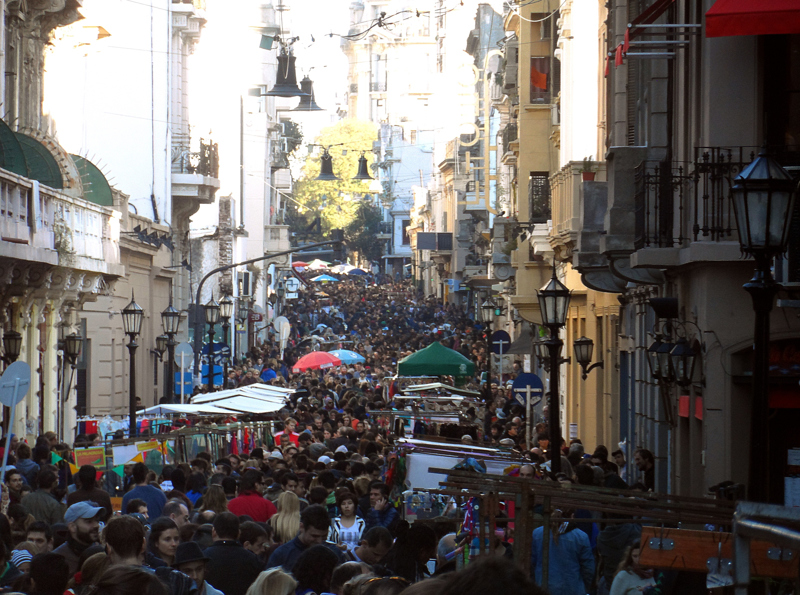
As we somehow managed to enjoy all the fair had to offer after our remarkable lunch, we decided to walk towards Puerto Madero: the waterfront neighbourhood of the city. It is the most modern part of Buenos Aires and it is home to old brick warehouses that have been converted into trendy lofts, offices, hotels and restaurants. Next to the warehouses, the bridge designed by famous Spanish architect Calatrava immediately caught our eyes. It is supposed to represent the movement of a man leaning over a woman as they dance tango, but all we recognized was a miniature version of the Erasmus Bridge in Rotterdam.
Nevertheless, we really appreciated the fresh air and the scenery, as it is very different from the rest of the city!

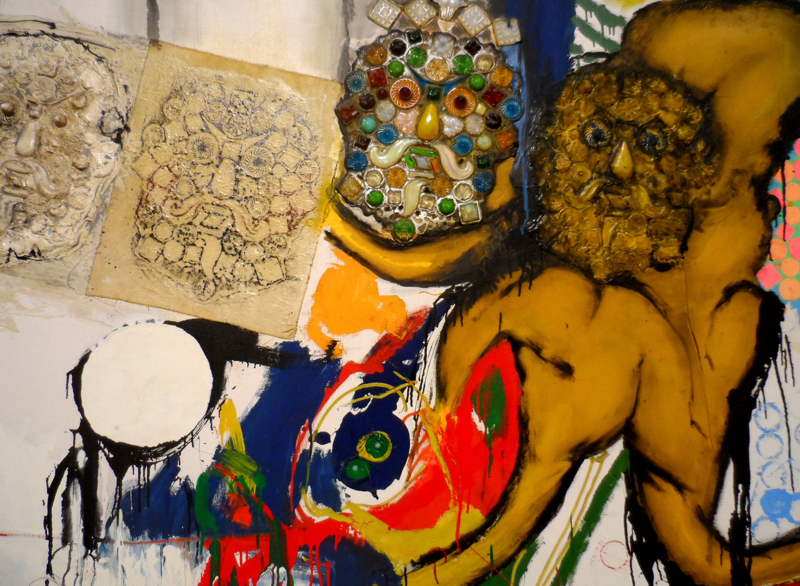
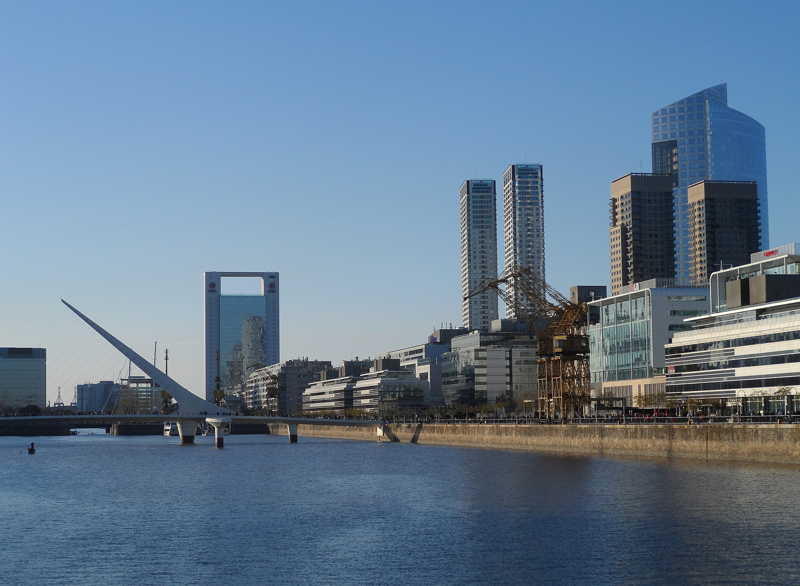
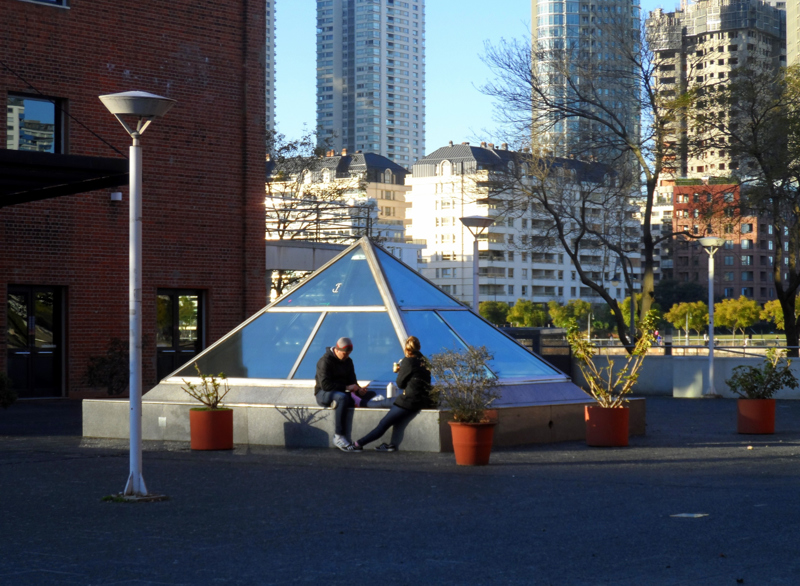
Share your travel adventures like this!
Create your own travel blog in one step
Share with friends and family to follow your journey
Easy set up, no technical knowledge needed and unlimited storage!